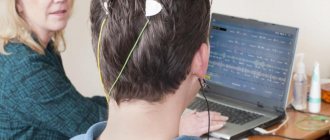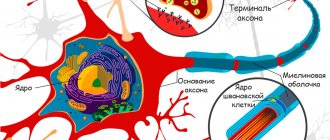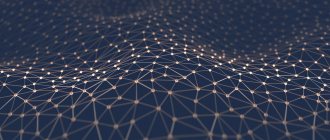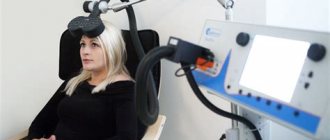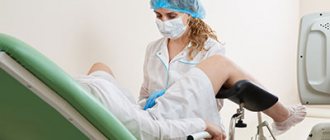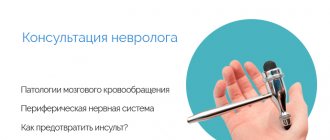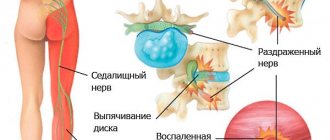All materials on our site are presented in a simple and understandable form, easy to understand and designed to help you solve sensitive problems related to your health and physical performance!
Biofeedback therapy is a technique that helps your child learn to control different parts of their body that are not usually considered to be under conscious control. The goal of biofeedback therapy is to help your child better understand how their body works and how to control it in healthier ways to get rid of illnesses. Biofeedback therapy is an opportunity to achieve better results in a shorter period of time. An opportunity for a child to understand what processes and what exactly is happening in his body. Any pain, negative emotion or stress is expressed in changes in physiology (GSR, plethysm, breathing, encephalogram). By changing (controlling) your physiology, you can calm pain, reduce stress and the manifestation of negative emotions.
The human brain has the ability to change the parameters of its activity thanks to its very interesting property - neuroplasticity.
These changes in the activity of the brain and nervous system to restore their functions through qualitative and quantitative changes are possible under the influence of experience. This explains their ability to restore lost connections after certain injuries (a person can learn to walk and talk again after suffering a stroke and various physical injuries). The human brain can change not only under the influence of damage. Other manifestations of neuroplasticity are directly related to brain development, more precisely to the mechanisms responsible for memory, learning and other processes.
How it works?
The BrainBit tape contains 4 dry EEG electrodes, a reference and a common electrode, as well as a miniature electronic module. This allows you to record a professional electroencephalogram with the best quality among the neural interfaces available on the market.
The device amplifies and digitizes the received signal and transmits it via Bluetooth to a computer, smartphone or tablet. Unlike analogs, the position of the electrodes on the BrainBit tape corresponds to the international 10-20 electrode placement pattern. The electrodes provide direct contact in the temporal lobe areas T3 and T4, as well as in the occipital areas O1 and O2.
According to cutting-edge international research, these zones are optimal for recording the levels of the four main types of brain waves. BrainBit records electrical activity as “raw” EEG data, which is represented as levels of the four main brain rhythms.
Application of the biofeedback method in the treatment of children with urinary disorders
Urinary disorders are a pathology that does not directly threaten the patient’s life, but is undoubtedly a socially significant problem, leading to a more or less pronounced limitation of the patient’s mental and physical activity, complicating his social adaptation in society, which leads to problems in communicating with peers, lagging behind in studies, conflict situations in the family. It must be emphasized that this problem concerns not only the patient himself, but also his microenvironment, which, in turn, can support the torpid course of urination disorders. Moreover, the described set of problems is relevant for children, especially in certain, “critical” periods from the point of view of psychophysiological changes (in the preschool, preschool and school periods, when the child is involved in a new social group - kindergarten, school group, in pre- and puberty period). In the vast majority of cases, urination disorders are caused not by anomalies in the structure of the urinary tract and anatomical defects in the nervous system, but by a delay in the maturation of the higher centers of autonomic regulation of the lower urinary tract. Urination is a complex act that represents the ability to actively contract and relax the external urethral sphincter and pelvic floor muscles, as well as suppress detrusor activity and thereby regulate urge and delay (if necessary) emptying the bladder. The basis of urinary dysfunction is the lack of coordination of the activity of the detrusor, bladder neck and external urethral sphincter. Neurogenic bladder (NUB) is a collective concept that unites a large group of disorders of its reservoir and evacuation functions, which develop as a result of damage to the nervous system at various levels (from the cerebral cortex to the intramural apparatus of the bladder). Taking into account the reflex activity of the bladder and the state of its adaptation, four types of urinary incontinence (UI) are distinguished: stress urinary incontinence - involuntary (without urge), urine leakage during physical activity, when coughing, laughing, changing body position and other conditions that cause increased intra-abdominal pressure. The most common cause of stress UI is weakening of the pelvic floor muscles, as a result of which, as intra-abdominal pressure increases, the force transmitted to the bladder becomes greater than the force transmitted to the urethra. This leads to intravesical pressure exceeding urethral pressure and, as a consequence, to urine leakage. Urge incontinence is the involuntary leakage of urine followed by a feeling of a strong, uncontrollable urge to urinate. This type of urinary incontinence is usually associated with involuntary contraction of the detrusor, and the condition itself is defined as detrusor instability (hyper-reflex bladder). With mixed urinary incontinence, a combination of symptoms is observed. Overflow incontinence is an involuntary, drop-by-drop leakage of urine when the bladder is overstretched and there is a large amount of residual urine. Treatment of NUT that is optimal for each individual patient can be selected only in the case of the most complete nephrourological and urodynamic examination. Currently, treatment of NMP is carried out in three main directions: pharmacological, surgical (rarely used in children) and non-pharmacological. Pharmacological treatment is used to reduce the number of involuntary detrusor contractions and increase urethral resistance. The basic pharmacological agents used in the treatment of hyperreactive bladder (its most common dysfunction) are atropine and drugs from its group. However, the use of atropine is limited due to the severity of systemic side effects. Side effects when using selective M-anticholinergics (oxybutynin, trospium chloride) are much less common, but are also observed. The latest generation M-anticholinergic, tolderodine, which has minimal side effects, is expensive and requires long-term (4-6 months) administration. It should be noted that in some children the bladder is not sensitive to the effects of anticholinergic drugs. Currently, the greatest prospects are associated with non-drug methods of treating NMP. These include: a planned urination regimen, physiotherapeutic methods, therapy using the principles of biofeedback. The modern method of treating bladder dysfunction using hardware biofeedback complexes is based on a system of exercises for isolated training of the pelvic floor muscles. Thus, urinary incontinence in the vast majority of cases is an indication for the use of biofeedback methods in the complex treatment of neurogenic dysfunctions of the bladder, as it allows to increase the activity and contractility of the voluntary urethral sphincter, and as a result of the anal-detrusor and urethral-detrusor reflexes, normalization of detrusor activity is achieved . The biofeedback method (biofeedback, BFB) is a modern, highly effective non-drug method that uses the combined effects of myotraining methods aimed at increasing the tone of the pelvic floor muscles and developing a strong reflex contraction in response to a sudden increase in intra-abdominal pressure. During the sessions, patients are trained to control changes in the condition of the pelvic floor muscles. To increase the effectiveness of the method, we included in the sessions procedures for developing diaphragmatic relaxation breathing (DRB) in patients, which allows us to teach the child to voluntarily control the muscles of the anterior abdominal wall to further exclude them from work. In the treatment process, one of the important factors is motivation, therefore, for training using the biofeedback therapy method in children, a set of interactive game scenes was used as a reinforcement video, which is especially important for achieving general neuromuscular relaxation, which creates optimal conditions for the effective development of the necessary central programs for the coordinated work of muscles responsible for urinary retention. In addition, myotraining sessions (BF-therapy “Mio”) help improve blood supply to the pelvic organs and perineal muscles. It should be noted that the advantages of this method include non-invasiveness and active participation of the patient in the treatment process using game plots, which is important as a factor of interest, especially in childhood and adolescence, the convenience of demonstrating to the subject his own successes, and the ease of changing regulation strategies. In contrast to the predominantly symptomatic nature of pharmacotherapy within the framework of traditional approaches to the treatment of urinary disorders, the main goal of biofeedback therapy is to restore the normal activity of the body's regulatory systems, which leads to the elimination of pathological symptoms and an improvement in the quality of life. Biofeedback therapy allows patients to develop the ability to voluntarily (at the first stages, later involuntary) control of the pelvic floor muscles, and indirectly - the functions of the bladder, with the participation of the patient himself, which allows to increase self-esteem and to a greater extent neutralize the negative influence of the environment, such as etiological factor in the development of the underlying disease. A significant positive aspect of the biofeedback method is that biofeedback devices do not have any physical and chemical effect on the body, being only recorders of ongoing physiological processes. There are no absolute contraindications for the use of biofeedback therapy. Relative ones include: infectious and inflammatory diseases of the urinary system in the acute stage, organic damage to the central nervous system and severe delay in neuropsychic development, severe concomitant pathology, children under 5 years of age. Thus, most relative contraindications are, to one degree or another, associated with the patient’s condition in which he is physically or mentally unable to perform the task assigned to him. The main difficulty in the process of training the pelvic floor muscles is that most children are not able to contract these muscles in isolation, since they are anatomically hidden and instead of activating the m. levator ani, patients usually contract antagonist muscles (rectus abdominis, gluteal, thigh muscles), further increasing intra-abdominal pressure. The problem of isolated training of the pelvic floor muscle group can be solved only by using biofeedback therapy methods, since in this case visual information is conveyed directly to the patient, which makes it easy to control the correctness of the exercises. A biofeedback therapy session is based on the principle of alternating periods of work and rest, which allows you to avoid overwork and loss of interest in the activity. To treat patients with urinary incontinence using the biofeedback therapy method, we used a domestically produced biofeedback cabinet (a hardware-computer complex for functional biofeedback with the ability to record envelope myograms, heart rate and rhythm, frequency and pattern of breathing). To study the electrogenesis of the pelvic floor muscles, we used cutaneous disposable electromyographic (EMG) electrodes. These electrodes are used with the Mio program. Simultaneous recording of the activity of the pelvic floor and abdominal wall muscles makes it possible to differentiate their contractions and prevent an increase in intra-abdominal pressure when performing special exercises. Under our supervision in the nephrology department of the IDGKB there were 40 children aged from 7 to 15 years (average age - 10 years), follow-up observation was carried out one year after the end of treatment. In the group there were 31 girls (77%), 9 boys (33%). According to the type of neurogenic dysfunction, all children were divided into three groups: hyperreflex type - in 18 (45%), hyporeflex type - in 21 (52%), detrusor-urethral dyssynergia - 1 child (2.5%). The following clinical manifestations were noted: enuresis - in 21 (52%), daytime urinary incontinence and imperative urge to urinate - in 14 (35%), in 13 children a clinical picture characteristic of hyporeflex dysfunction (rare voiding with large volumes of urine) was observed. 12 children (30%) had a combination of enuresis and daytime urinary incontinence (mainly stress), 10 (25%) had pollakiuria. According to clinical and laboratory studies, infectious and inflammatory diseases of the urinary system in the acute stage, organic pathology of the central nervous system and lower parts of the urinary system were excluded in all patients. The urodynamic study was carried out using the domestic SURD-01 “Relief-M” system (uroflowmetry, cystometry) and the Urodyn-1000 uroflowmeter. The number and structure (duration, intensity and nature of muscle contraction and relaxation) of biofeedback therapy sessions ranged from 10 to 20, depending on the characteristics of clinical and instrumental data (Table 1). Sessions were conducted daily, each session lasting 45 minutes. Treatment sessions were carried out in two stages: the first (20 minutes) - training in diaphragmatic relaxation breathing, the second (25 minutes) - training of the pelvic floor muscles. After discharge from the hospital, depending on the dynamics of the main clinical and instrumental indicators, children were recommended to carry out exercises to train the pelvic floor muscles independently at home for 1–3 months according to an individually selected scheme. We assessed the effectiveness of biofeedback therapy based on the dynamics of changes in clinical manifestations and urodynamic parameters. Before the start of treatment and after the 10th session, the following parameters were analyzed: • clinical picture of the disease • rhythms of spontaneous urination • uroflowmetry indicators • cystometry (according to indications) • myography of the pelvic floor and anterior abdominal wall • uroflowmetry in combination with myography of the pelvic floor and anterior abdominal muscles walls. All children received complex treatment, which included, in addition to biofeedback therapy, metabolic therapy with vitamin preparations of groups B, A, E in combination with nootropics. In addition, out of 40 children, 23 received combination therapy: 6 (15%) - acupuncture, 10 (25%) - physical therapy, 7 (17.5%) - M-anticholinergics (oxybutynin). The use of combination therapy was associated with the absence or weakly expressed positive effect from the listed methods, as a result of which biofeedback therapy was added to the treatment. As a result of treatment with biofeedback therapy, positive dynamics in the department were observed in all patients. Of these, 7 children (17.5%) experienced a complete disappearance of symptoms, a significant improvement (decrease in voiding from 15-20 to 6-8, an increase in the average effective volume of the bladder, a decrease in the frequency of enuresis, urinary incontinence, or, in the case of hyporeflexia - increased frequency of micturition and decreased volume of urine) was observed in 29 (72.5%). In 30 (75%) children, we noted normalization (or pronounced positive dynamics) of urodynamic parameters. In 4 (10%) patients, there was a resumption of clinical symptoms in full (if recommendations were not followed at home). According to our data, the most effective use of biofeedback therapy “Mio” is in children with enuresis and clinical signs of a hyperreflex bladder (positive dynamics - up to 85% in the department and up to 80% in follow-up after a year). The positive dynamics were less pronounced in children with neurogenic bladder dysfunction of the hyporeflex type (52% in the department and 62% a year later). The dynamics of changes in the clinical picture of the diseases are presented in Table 2. Clinical example Patient S., 10 years old, suffering from daytime urinary incontinence and enuresis from an early age (90% of nights). Based on a comprehensive nephrourodynamic examination, a diagnosis was made: overactive bladder. 10 sessions of biofeedback therapy were conducted using the method we proposed. By the end of the course of biofeedback therapy in the department and in the follow-up one year later, no daytime urinary incontinence or enuresis was noted. In a combined study (Fig. 1A) - uroflowmetry (curve a) in combination with electromyography of the muscles of the anterior abdominal wall (curve b) and the pelvic floor muscles (curve c), high activity of the muscles of the anterior abdominal wall and pelvic floor muscles is noted during urination. This situation can be regarded as evidence of sphincter-detrusor dyssynergia. After 10 sessions of biofeedback therapy, “electromyographic silence” is observed (Fig. 1B) during urination (uroflowmetric curve - a): lack of activity of the muscles of the anterior abdominal wall (curve b) and the pelvic floor muscles (curve c), which is the norm. Similar indicators remained during the control study after a year (Fig. 1B). When conducting an EMG study of the activity of the muscles of the anterior abdominal wall and pelvic floor (Fig. 2), the following results were obtained. Before treatment (Fig. 2A): the activity of the muscles of the anterior abdominal wall (curve a) was 10 μV, the maximum activity of the pelvic floor muscles (curve b) was up to – 30 μV. In this case, there is an absence of voluntary coordinated contractions and relaxations of the pelvic floor muscles (only uncoordinated, spontaneous contractions are recorded). At the end of treatment, according to the data of envelope myograms (Fig. 2B), positive dynamics are noted: a decrease in the activity of the muscles of the anterior abdominal wall (curve a) to 5 μV, an increase in activity, the ability to voluntarily contract (up to 85 μV, duration - 10 s) and muscle relaxation pelvic floor (curve b). 2 months after completing the course of treatment using biofeedback therapy, according to the envelope myogram (Fig. 2B), high activity of the pelvic floor muscles was noted (curve b) up to 100 μV, the duration of contraction increased to 26 s. At the same time, low activity of the muscles of the anterior abdominal wall remained (curve a). Similar indicators were observed during the study a year later (Fig. 2D). The presented data demonstrate the effectiveness of pelvic floor muscle training and the presence of “muscle memory” after completion of the training in the department, in the absence of clinical manifestations of the disease. In parallel with urodynamic and myographic studies, we carried out simultaneous recording of the frequency, depth, rhythm of breathing (curve a) and pulse rate (curve b) (Fig. 3). Before the start of sessions for the development of RRD, there was a lack of synchronization in the activities of the cardiovascular (CVS) and respiratory systems (RS) - the phase of maximum inspiration does not correspond to the maximum pulse rate (Fig. 3A). This discrepancy demonstrates an imbalance in the regulation of systems by the autonomic centers. At the end of the cycle of the Bos -therapy sessions (Fig. 3b), the restoration of the activity of the CSC and DS (the phase of the maximum inspiration corresponds to the maximum pulse frequency). Similar indicators were noted during the study in a year (Fig. 3B). The conclusion thus, the BOS -therapy (training of the pelvic bottom muscles, the production of diaphragmatic -rural respiration) is a highly effective, painless and non -invasive method of treating patients with urination disorders. The advantages of this method include a multiple -organ effect, which includes a direct effect on the muscles of the pelvic floor, an improvement in the functions of the detrusor and the sphincter apparatus, their coordinated interaction, and a positive effect on regulation from vegetative centers. The training methodology is individual, therefore, it allows you to develop a program for correction of neurogenic dysfunction, depending on its type and characteristics of the clinic for a particular patient. The advantage of the Bos -therapy method is also that the correction of physiological parameters is carried out gradually and softly. This method is well perceived and transferred to children and is deprived of side effects, so treatment using the principles of BOS can be proposed as a first -line method in the treatment of patients with urination disorders.
BrainBit biofeedback system
The BrainBit neurointerface is successfully integrated with the professional Kinesis biofeedback software, which makes it possible to use the BrainBit device for Biofeedback (BFB) training on a laptop running Windows OS.
The Kinesis application with the BrainBit neural interface allows for psycho-emotional correction based on the analysis of brain biopotentials using the biofeedback (BFB) method.
The device amplifies and digitizes the received signal and transmits the data to an application via Bluetooth on a laptop.
Important! The BrainBit biofeedback system is not a medical device and cannot be used for the diagnosis or treatment of mental illness.
What is the essence of biofeedback rehabilitation for children and adults?
Boss therapy simulators, which are used in the rehabilitation of children and adults, consist of 2 components. The basis is special sensors that record brain signals, heart rate, breathing, and muscle activity. The second part converts the received data into a form understandable to humans - a picture or sound. These signals teach the patient to manage the functions that are problematic for him.
During biofeedback sessions during rehabilitation, special sensors are installed on problem areas of children or adults. The rhythm of the brain, breathing and heartbeat areas is converted into audio and video signals. This is how the patient learns to control the body through sounds and pictures.
Biofeedback training on BrainBit
Training on the BrainBit biofeedback system consists of continuous real-time monitoring of physiological EEG indicators and conscious control of them using multimedia, gaming and other techniques in a given range of values.
Thus, during the course of biofeedback sessions, it is possible to learn to strengthen or weaken the EEG indicator, and therefore, relax or concentrate.
BrainBit is an innovative neural interface that allows you to record a professional electroencephalogram with excellent signal quality.
The device captures, amplifies and digitizes the received signal, then transmits it via Bluetooth to an application on a laptop.
SECOND STAGE OF BOSS THERAPY - BASIC (skill development).
At this stage, the biofeedback therapist conducts therapy and training sessions to correct the selected physiological function, gradually increasing the dynamics and adding complexity. At the same time, intermediate results are recorded. You can see feedback on the progress of therapy visually on the monitor, which is constantly located in front of you.
The duration of the main period can be different - from 10-15 sessions for psychophysiological preparation of pregnant women for childbirth to 25-30 sessions for eliminating depression, panic attacks or phobias.
Biofeedback therapy sessions are carried out both with adults and, in many cases, with children and adolescents.
With the help of bioparametric sensors installed on the body and surface of the child’s head, the bioelectrical activity of his brain and other certain physiological parameters are recorded (these parameters vary depending on the tasks of a particular activity). A biofeedback therapist, using a special computer program, processes these signals and receives information about the key functional components of the body, including the child’s brain activity, the so-called brain rhythms (theta, alpha, beta and others). Depending on the task and the child’s condition, to correct his psychophysiological state, some of them need to be strengthened, while others need to be weakened. To do this, in a computer training test, which is prepared in advance by a specialist, the behavior of a certain character (for example, the speed of a car or train) changes in real time depending on how pronounced the reinforced and suppressed brain rhythms are. In such a situation, play motivation, as well as the child’s excitement, are the determining factor that forces the child’s brain to change the nature of its work towards more stable and functional states. Depending on the specific situation with a given child and his individual characteristics, the biofeedback therapist identifies those areas of his brain that will receive special attention and emphasis during therapy and training, while, of course, the child remains the main character.
During a biofeedback therapy (training) session, the child sits in a comfortable chair. In a fun and relaxed manner, in the form of images, sounds and symbols understandable to the child (the so-called feedback signals), the monitor screen shows his physiological parameters changing as the training progresses, teaching him to control his own activity and behavior, as well as to train certain cognitive abilities. The biofeedback therapist closely monitors changes in the child’s physiological state, which allows him to dose the load during the session (breathing training, muscle relaxation training). The child himself is drawn into the healing process, learns to consciously manage his emotions, concentrate, consciously coordinate motor skills, and respond to external stimuli and stressful situations. It is not the child who is controlled, but the child himself who learns to control his body and psyche. The child’s active and fully conscious participation in biofeedback training explains the high effectiveness of this biofeedback technique.
In the process of biofeedback therapy or training, a specialist, having complete information about your problem, as well as information received in real time on the computer monitor from sensors connected to you, helps you make the best use of the data received.
The specialist gives advice and guidance on how to behave in order to find the best ways to manage your body's functions in specific situations. When the first positive results appear, the biofeedback therapist focuses your attention on these successes. The participation of a biofeedback therapy specialist is also very important at the stage when you have already completed a course of biofeedback therapy or training, mastered the method and move on to the next stage of applying the acquired skills directly in everyday life. In this situation, the main emphasis of the biofeedback therapy specialist is on developing your active attitude towards the process of self-control and healing. Biofeedback therapy helps you consider how your own body reacts to various stressful situations, monitors and gives you feedback, showing you clearly what success you have achieved in regulating your stress level: when you tense up, the volume of sounds increases, when you use the appropriate relaxation technique, the volume increases go down, thereby informing you of success. This gives you a concrete understanding of how biofeedback techniques work for you.
Biofeedback therapy teaches you how to use your consciousness to control your own body. When you use biofeedback therapy developed for you by a specialist, the signals from your nervous system become available to you in a tangible and measurable form. This way, you can make the appropriate changes to achieve the results you need.
The absence of side effects and reactions makes biofeedback therapy very effective. For productive treatment with biofeedback, a very important factor is required that is specifically related to yourself - motivation, i.e. your most immediate active desire for recovery. However, beneficial results require time and effort for improvements and achievements to be achieved. If you do not want to follow the instructions of the biofeedback therapist and the tasks he has set for you, then even if all the other conditions are met, there will be no result. Therefore, your level of motivation is key to the success of biofeedback therapy, as well as your desire to actively participate in the treatment regimen. A high level of motivation can be ensured by a psychological focus on recovery.
It is very important to understand that the greatest success is possible only with your conscious, active participation in the process of your own rehabilitation.
Biofeedback therapy is strictly individual, dosed and controlled by a biofeedback therapist during each session throughout the entire treatment and correction course.
Features of the biofeedback system
- Dry electrode technology . No electrode gel is required to install the device
- Removing noise . The device uses a noise elimination system to obtain a higher quality signal
- Built-in courses and games . Preset courses are used for training. The biofeedback system includes a large number of games, facilitating the routine training process, which is especially important for children
- Flexible threshold adjustment . The program sets the boundaries of the area of successful attempts, which allow you to monitor the success of the exercises.
- Wireless connection . Signal transmission is carried out via Bluetooth protocol
- Up to 12 hours of active work . The neurointerface is powered by an internal battery
Purpose
The trainings are intended to both exclude and prevent the following psycho-emotional disorders in children over 5-6 years of age and adults:
- ADHD (attention deficit hyperactivity disorder)
- Aggression and impulsivity, absent-mindedness and problems with adaptation at school
- Delayed language development, dyslexia (problem with reading), dysgraphia (impaired writing process) and dyscalculia (inability to learn arithmetic), phobias and social isolation (in the peer group)
- Insomnia, depression, migraines, chronic headaches
Conducting biofeedback training with children is recommended if the child:
- poor adaptation in kindergarten or school
- attention disorder
- difficulty falling asleep and staying asleep
- excessive fears, anxiety
- nocturnal enuresis
- moodiness, irritability
- anxiety-depressive disorders
- tics and stuttering
- headache
- doctors diagnose vegetative-vascular dystonia or other psychosomatic diseases (neurodermatitis, bronchial asthma)
- parents wish to strengthen the autonomic nervous system for preventive purposes.
The goal of biofeedback therapy is to help your child better understand how their body works and how to control it in healthier ways to get rid of illnesses. The advantage of biofeedback therapy is that it is nonspecific with regard to diagnosis, i.e. allows you to work not with individual diseases, but with the main types of dysfunctions of the body’s regulatory systems - nervous (central, peripheral, autonomic), immune and humoral. The consequence of this is the possibility of correction of almost any non-infectious and non-surgical disorder with biofeedback therapy.
Results of psycho-emotional correction using biofeedback system
- The effectiveness of educational activities in children and adolescents increases
- Intellectual activity, creativity and accuracy in performing tasks under stress increases
- Reading, spelling and arithmetic abilities are restored (for example, after a stroke)
- Mental state improves
How does biofeedback therapy work with children?
Working with a child takes place in the form of a game and consists of watching a video image or cartoon specially selected in each specific case, taking into account the individual characteristics of the child, and completing tasks based on it. This method is so simple that it is absolutely accessible to children from the age of 5. The biofeedback therapy procedure is absolutely painless and has no side effects; bioparametric sensors attached to the child’s body only take readings without affecting the child’s body. The game form of presentation will maintain children's keen interest in participating in biofeedback therapy and promote the natural development of skills. Children master the ability to balance their emotional swings, identify their emotions and perceive psychological information much faster than children who have not been treated with biofeedback methods.
The child is in a comfortable chair and special bioparametric sensors are attached to his body and head, which record brain activity and various other physiological indicators. This data is processed by a special computer program and provided to the child in the form of visual and audio signals. On the monitor screen, the child can observe how his physiological processes, depicted in pictures, change. With the help of a biofeedback therapy specialist, the child learns to control his body functions.
To achieve certain goals, some rhythms in the child’s brain need to be increased, while others need to be decreased. Therefore, in the tasks that the child performs, the behavior of various characters may change depending on how effectively the child reinforces or suppresses the brain rhythms recorded by the sensors. It is the play motive and excitement of the child that is the most important, key factor that forces the child’s brain to change the nature of its work towards stable states (so that the car continues to move and does not stop, the baby mammoth continues its path, and the flowering meadows do not turn gray). In the process, the child's brain adapts to new ways of working, relying on feedback signals to do this. At its core, the process of Beaus-therapy for children is very similar to the game of “near-far”: if you regularly inform the child how close he is to the intended goal, then very soon, of course, not without some “bumps”, he will find “pirate treasures” "
Depending on the problems and individual characteristics of the child, the specialist identifies those areas of the brain that will be targeted by the main work and biofeedback therapy program, while the main character in this complex process is, of course, the child himself.
Biofeedback therapy maintains a balance between the two hemispheres of the brain, as well as between the nervous and immune systems, thereby influencing physical, emotional, and intellectual processes, ensuring optimal use of all the child’s capabilities.
Hyperactivity or ADHD (attention deficit hyperactivity disorder) is a serious problem and is the most common behavioral disorder in children and adolescents. That is why the main goal of biofeedback therapy for children is: increasing attention, improving memory and enhancing intelligence
The second common problem among children and adolescents is nocturnal and daytime enuresis.
Before starting work using the biofeedback therapy method, first of all, you need to make sure that a child with such a problem does not have any signs of inflammation or disorders of the urinary system (you need to do the appropriate analysis and conduct the necessary examination as prescribed by a nephrologist or urologist). If the child’s genitourinary system does not have pathology, then we can draw a definite conclusion that the transmission of information to the brain about the fullness of the bladder is disrupted, that is, there is partial immaturity of the central nervous system.
The arrival of a newborn child in the family may well lead to problems with incontinence in older children. At the same time, the older child suddenly forgets how to control urination in the form of a conscious or unconscious protest against the seeming lack of attention, love and affection on the part of parents who are fully occupied, first of all, with the newborn. A similar situation very often occurs when a child moves to another school or another unfamiliar kindergarten, or the whole family moves to a new place of residence.
Excessive strictness of parents or guardians and physical punishment, as well as quarrels between parents and, of course, divorce can also lead to problems in the child.
As a rule, the first results after starting biofeedback therapy appear after the tenth day of work. The duration of work with a particular child usually depends on the type of ADHD and the presence of various accompanying disorders.
Children with hyperactivity typically require many more days of work than children without hyperactivity. To work with hyperactive children, it is first necessary to conduct special classes aimed at teaching the child proper breathing and relaxation.
The absence of side effects and reactions makes biofeedback therapy very effective in working with children and adolescents. For productive treatment with biofeedback, a very important factor is required that is specifically related to your child - motivation, that is, his most immediate active desire to get well. However, beneficial results require time and effort for improvements and achievements to be achieved. If your child does not want to follow the instructions of the biofeedback therapist and the assigned tasks, then even if all other conditions are met, there will be no result. Thus, the child's level of motivation is key to the success of biofeedback therapy, as well as the desire to actively participate in the treatment regimen. A high level of motivation can be ensured by a psychological attitude toward recovery, and not only the biofeedback therapist needs to work closely on this during sessions, but also the parents themselves.
Biofeedback therapy is strictly individual, dosed and controlled by a biofeedback therapist during each session throughout the entire treatment and correction course.
We provide a full range of professional services for biofeedback therapy, using all the most advanced techniques known today and the most reliable and scientifically based methods of psychophysiological diagnostics, as well as certified modern medical equipment made in Russia.
Portable electroencephalograph-recorder for neurofeedback, training and rehabilitation with biofeedback:
Electroencephalograph-recorder "Encephalan-EEGR-19/26"
- multi-parametric ( 10 or more
) registration of indicators, allowing you to create and use more effective scenarios of biofeedback procedures in sports, education and science, for special training and rehabilitation - providing professional neurophysiological support with the help of the main software for EEG studies “Encephalan-EEGR”
and additional software - differential diagnosis of epilepsy
- psychophysiological studies
- neuromarketing research
Our specialists have undergone professional training at Moscow State University. M.V. Lomonosov: Faculty of Psychology, Department of Psychophysiology and Department of Social Psychology in the direction of “Practical Psychophysiology”, have official certificates and permits to conduct professional activities as specialists in biofeedback therapy, issued by Moscow State University. M.V. Lomonosov, the right to conduct professional activities in the field of psychophysiological research, as well as higher psychological and special medical education.
Brainbit's main purpose
This is correction and assistance for psycho-emotional disorders. The technique is also actively used to train (develop the skill) state of relaxation (“alpha state”) for neuroses and psychosomatic disorders
EEG biofeedback training is effectively used to develop concentration skills in children with hyperactivity and attention deficit disorder.
In fact, there are two main methods of EEG-feedback training:
- Alpha rhythm relaxation training , which is actually training to develop relaxation skills
- Beta rhythm activation training – training to activate cortical processes, which helps to increase the level of attention and cognitive capabilities of the psyche
Biofeedback therapy for children is aimed at:
- correction of attention disorders in children, improvement of concentration and distribution of attention and switchability
- improvement of cognitive functions (memory, attention, thinking)
- improvement of short-term and long-term types of memory
- development of self-control and perseverance
- improved perception
- normalization of the functional state of the nervous system
- increasing stress resistance
- reduction of emotional tension
- reduction in anxiety levels
- increasing the level of self-organization
- reduction of negative emotional background and acquisition of relaxation skills
- suppression of excessive autonomic activity in response to external stimuli
- training in the skills of muscular and general emotional and mental relaxation
Biofeedback training on alpha rhythm
Alpha rhythm is wave oscillations of the EEG rhythm with a wave frequency of 7-13 Hz, most often grouped in modulations (“spindles”) lasting 0.2 seconds, with a smooth increase in amplitude and its decay—the “spindle” type.
Alpha rhythm relaxation training is used for most neurotic, psychosomatic disorders of the neurasthenic and/or astheno-depressive type, for sleep disorders, neurotic disorders such as panic attacks, for stuttering, tics, situational affective disorders, some forms of phobias and obsessive states, as well as headaches.
Also, EEG biofeedback training can be a preventive method of adaptation to stress in people engaged in intense work or experiencing prolonged or acute personal psycho-emotional stress.
Therefore, the method of biofeedback-EEG training is an important addition in equipping psychological relief rooms for professional indications.
The patient undergoes a training course on alpha-ri to manage his emotional background and mood in situations that are relevant to him. The state of relaxation is “remembered”, and when sessions are repeated, it becomes a kind of automatic compensatory mechanism of self-regulation during stress.
The alpha rhythm is most pronounced in the occipital regions, so it is necessary to set the EEG recording in the O1 and O2 regions in the program settings.
Biofeedback therapy method.
The biofeedback therapy method uses neuroplasticity to achieve absolutely balanced, consciously regulated brain activity by a person. The physiological basis of this method is the exceptional plasticity of the brain, the procedural basis is conditioned reflex learning or conditioning. The use of these unique methods gives remarkable results both in the treatment of many chronic diseases, clinical syndromes and symptoms, and when working with practically healthy people, to reduce the level of anxiety, stress, phobias and fears, etc.
The brain retains plasticity throughout life, but it is at its maximum at an early age.
The structure of the brain is formed to a greater extent in the first years of life than in any other period. Today we know that adolescence is an equally significant period for the reorganization of brain structure and neuroplasticity. Neuroplasticity of the brain increases during adolescence and remains at this relatively high level until adulthood. The adult brain is certainly not as capable of change as the adolescent brain, but the brain's lower capacity for neuroplasticity does not mean its complete absence!
During adolescence, the brain is particularly sensitive to environmental influences. During this period, the child learns intensively and easily. For the developing brain, the acquisition of knowledge and skills is a basic and completely natural process.
Based on the above, we can clearly conclude that biofeedback therapy is most effective in childhood. Its essence lies in teaching the brain new ways of working, allowing it to respond to proposed situations in an unusual, but desirable way for a child or adolescent.
Biofeedback training on beta rhythm
Beta rhythm is a rhythm of cortical activation, with a wave frequency from 14 to 25-30 Hz, low amplitude up to 40 μV, most pronounced in the frontal and temporal leads during active wakefulness.
In a state of increased beta rhythm, our brain trains to bear loads and perform tasks that require concentration and concentration. Staying in such a state contributes to the maturation of the subtle cognitive abilities of the brain in children with disharmonious development. This state is not something artificial - after all, many of us are already “looking” for various challenges in life, actively learning, devoting a lot of effort and activating our attention and concentration on some highly specialized activity.
The beta rhythm is most pronounced in the temporal regions, so it is necessary to set the EEG recording in the T3 and T4 regions in the program settings.
Software Features
- A library of pre-installed trainings for different areas of psycho-emotional correction.
- Demonstration through images of the most suitable electrode placement sites for the most effective training.
- Adaptation to a specific user and assessment of process dynamics.
- A variety of game situations that captivate the user and make the training process more visual and enjoyable.
- Building unique techniques that are most suitable for a specific situation, and saving them in a user library.
- Generating an extended report on each training conducted, clearly showing the effectiveness of the work done.
Main program window
Window with settings and selection of courses
Training window
Result Trend Window
Resistance measurement tool interface
Training history window
Specifications
| Registration certificate | No |
| Number of channels | up to 4 |
| Sampling frequency | 250 Hz |
| Recorded signals | EEG |
| Continuous operation time | at least 12 hours |
| Measured voltage range | ±0.4V |
| Battery charge current | 100 mA ± 10% |
| Battery charge time | up to 4 hours |
